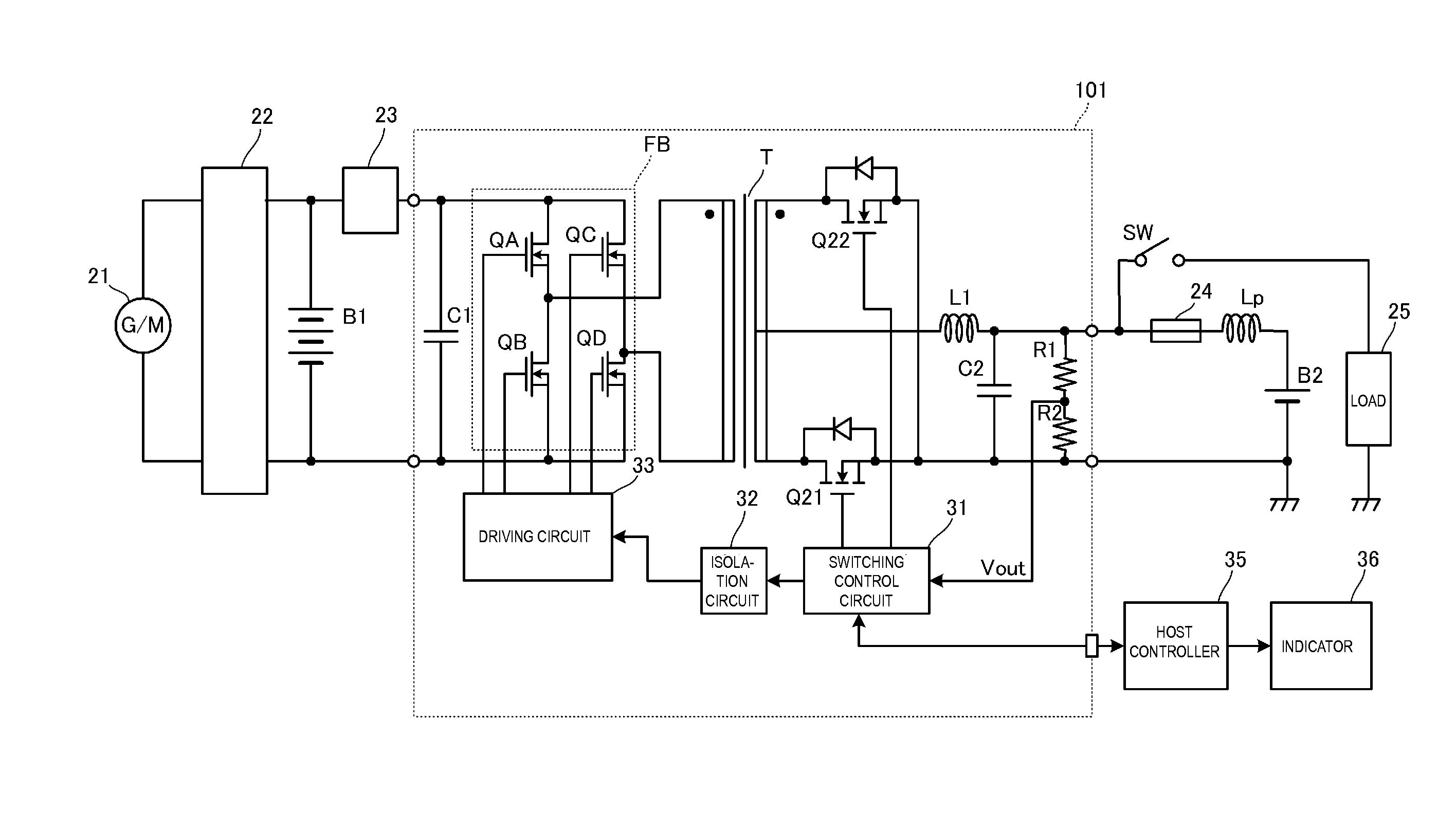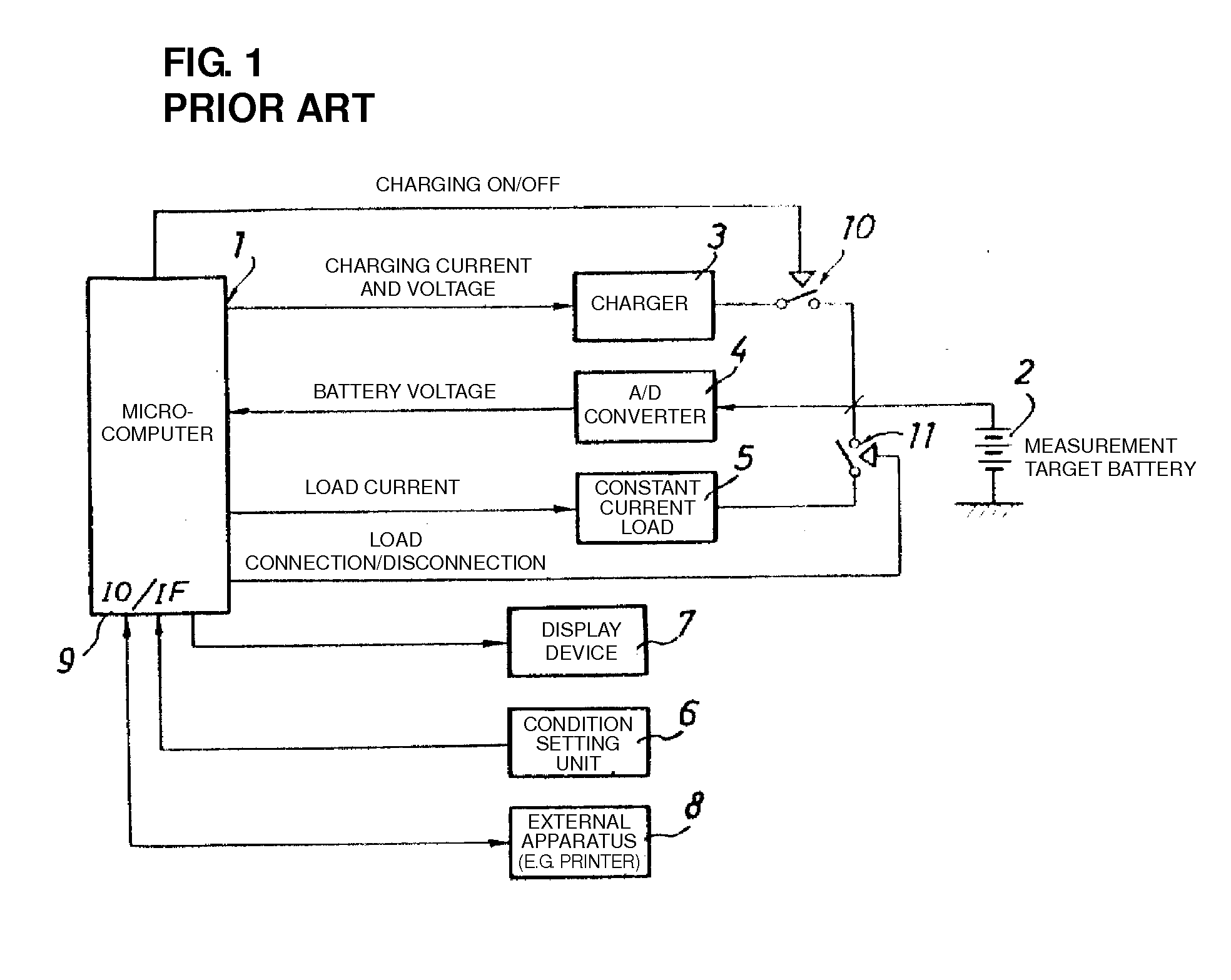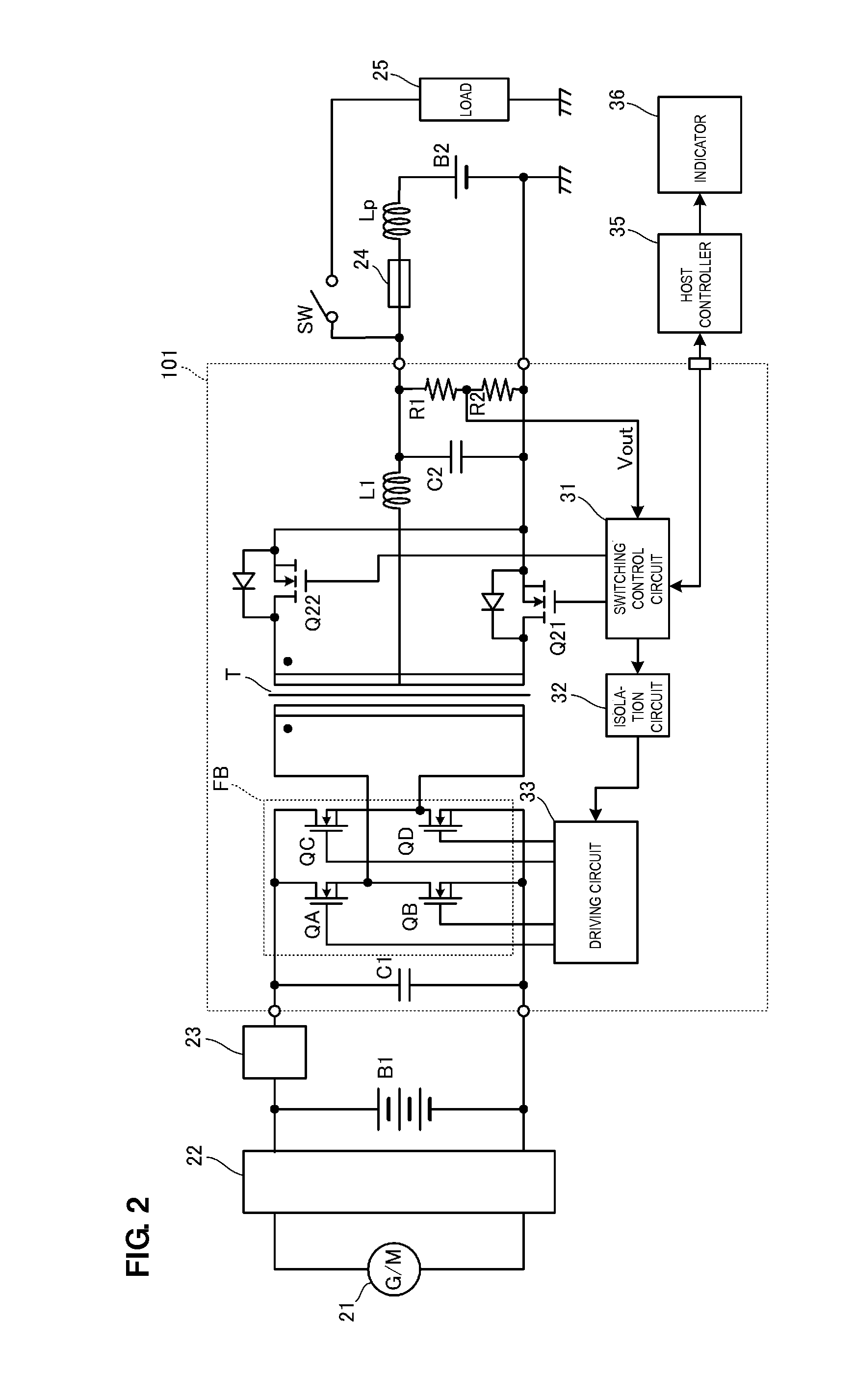Dc-dc converter
a converter and dc-dc technology, applied in the direction of engine-driven generators, battery/fuel cell control arrangements, transportation and packaging, etc., can solve the problems of reducing the effective capacity wasting space in the installation of the alternator, and reducing the internal physicochemical property so as to prevent the increase in space and cost, determine the effective capacity or characteristic degradation state of the secondary battery, and effectively use a dc-d
- Summary
- Abstract
- Description
- Claims
- Application Information
AI Technical Summary
Benefits of technology
Problems solved by technology
Method used
Image
Examples
first preferred embodiment
[0034]FIG. 2 is a circuit diagram illustrating the circuit configuration of a DC-DC converter according to the first preferred embodiment of the present invention and a peripheral circuit. The illustrated circuit is a charging / discharging circuit for a hybrid vehicle, and includes the electric motor (generator) 21, a first secondary battery B1, and a second secondary battery B2.
[0035]The electric motor 21 functions as a generator while a hybrid vehicle travels with a gasoline engine, and functions as an electric motor while the hybrid vehicle is driven by a lithium-ion battery.
[0036]A charging / discharging control circuit 22 is disposed between the electric motor (generator) 21 and the first secondary battery B1. A switching circuit 23 is disposed between the first secondary battery B1 and the input portion of a DC-DC converter 101. The output portion of the DC-DC converter 101 is connected to the second secondary battery B2 via a fuse 24. An inductance of a line between the output p...
second preferred embodiment
[0058]FIG. 6 is a circuit diagram illustrating the circuit configuration of a DC-DC converter according to the second preferred embodiment and a peripheral circuit. A DC-DC converter 102 according to the second preferred embodiment differs from the DC-DC converter 101 according to the first preferred embodiment illustrated in FIG. 2 in that a switching element Q3 is connected in series to the capacitor C2. The switching control circuit 31 is turned off only when the characteristic evaluation of the second secondary battery B2 is performed, and is in the ON state at the time of the normal driving. Except for the switching element Q3, the configuration of the DC-DC converter 102 is the same as that illustrated in FIG. 2.
[0059]Thus, by blocking the path of a current passing through the capacitor C2 using the switching element Q3 only at the time of the characteristic evaluation, the LC resonance operation of the inductor L1 or the parasitic inductor Lp and the capacitor C2 is prohibite...
third preferred embodiment
[0060]Exemplary isolated DC-DC converters have been described in the first and second preferred embodiments. In the third preferred embodiment, an exemplary non-isolated DC-DC converter will be described. FIG. 7 is a circuit diagram illustrating the circuit configuration of a DC-DC converter according to the third preferred embodiment and a peripheral circuit. The configuration illustrated in FIG. 7 is the same as that described in the first and second preferred embodiments except for a DC-DC converter 103. The DC-DC converter 103 includes a rectifier-side synchronous rectifier element Q11, a commutator-side synchronous rectifier element Q12, the inductor L1, and the capacitor C2 which define a synchronous rectification circuit. The DC-DC converter 103 includes the smoothing capacitor C1 on the side of the input portion thereof and an output voltage detection circuit including the resistors R1 and R2 on the side of the output portion thereof.
[0061]A switching control circuit 41 perf...
PUM
 Login to View More
Login to View More Abstract
Description
Claims
Application Information
 Login to View More
Login to View More - R&D
- Intellectual Property
- Life Sciences
- Materials
- Tech Scout
- Unparalleled Data Quality
- Higher Quality Content
- 60% Fewer Hallucinations
Browse by: Latest US Patents, China's latest patents, Technical Efficacy Thesaurus, Application Domain, Technology Topic, Popular Technical Reports.
© 2025 PatSnap. All rights reserved.Legal|Privacy policy|Modern Slavery Act Transparency Statement|Sitemap|About US| Contact US: help@patsnap.com



